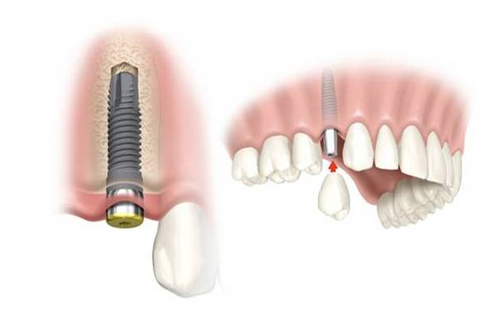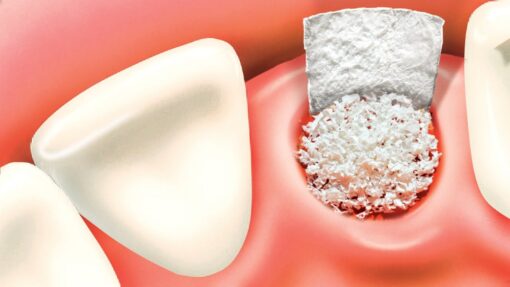If you were born with flat or receding gums and your adult teeth weren’t forthcoming, it may seem like there isn’t an easy way to get the dental implants you desire. But that’s not the case! Implants can be a great option for people who have bone loss. In fact, many adults receive implants because of bone loss as a result of aging or other conditions. If you would like to explore the benefits of implants but are worried about whether or not it’s too late for this type of procedure, read on!
Reducing stress and anxiety is one of the best things that we can do for our bodies. Stress releases adrenaline which produces certain chemical reactions in our bodies. Stressors can be almost anything: an argument with someone we love, a death in the family, financial instability, even something as small as jostling our routine too much. The effects of stress on your body can range from negligible to severe: hypertension, insomnia, high blood pressure (which can lead to stroke), depression, and more.
How can implants help?
Dental implants are artificial root structures that are surgically placed in the jawbone to hold an artificial tooth or a bridge in place. Implants are incredibly sturdy and reliable, and they come with a very low risk of failure. A dental implant is a permanent solution, unlike a bridge or denture, which must be removed and cleaned regularly. Because implants fuse with the jawbone, they are also a long-term solution for replacing a tooth.

When you receive dental implants, the implants are placed in your jawbone. The bone will then grow into the implant, creating a strongly held connection between the implant and the jaw. This process can take up to 3 months. Once the implant has fused with the jaw, your dentist can then place a tooth on top of that implant. The advantage of receiving dental implants is that you will have a strong, sturdy tooth that can withstand chewing, biting, and speaking.
Signs of bone density loss
When you experience a loss of jawbone density, you will see changes in your appearance as the bone density decreases. If you still have natural teeth, you may notice they are shifting or becoming loose. You may also experience discomfort when chewing as your bite may be changing. Other signs include:
- Changes in your facial structure
- Wrinkles forming around your mouth
- Lips sinking inward

- Headaches, facial pain, and jaw pain
- Changes or difficulty with speech
- Changes in the fit of your dentures
Is It too late for implants?
At first glance, it may seem like it’s too late to receive dental implants if you have lost a significant amount of bone in your jaw. But that’s not necessarily the case! When you receive dental implants, they fuse with your jawbone, creating a very firm and reliable connection. That being said, the jawbone is very resilient and can be stimulated to grow even in adults.
If you have lost a significant amount of bone in your jaw, you may be a candidate for a process called bone grafting. During this procedure, a healthy slab of your own jaw will be removed and placed into the empty space in the jaw where the bone is missing. This sliver of healthy bone will then fuse with the jaw, creating new bone and allowing you to receive dental implants!
Bone grafting
When you have missing bone, you may be a candidate for a process called bone grafting. Bone grafting is a procedure that involves taking a sliver of healthy bone from another part of your mouth and placing it into the empty space where your jawbone is missing.
Once the newly transplanted bone has fused with the rest of your jaw, you can then receive dental implants! There are a few different ways to perform a bone graft, each with its own advantages and disadvantages. The type of bone grafting procedure you receive will be based on the amount and type of bone that you are missing, as well as your overall health.
Dental implant surgery
Dental implant surgery is the process of receiving dental implants by going under general anesthesia. While dental implants can be placed while you are awake, going to sleep during the procedure allows your jaw to be relaxed and allows your dentist to have more precision during the surgery.

The first step of dental implant surgery is to numb your gums and the surrounding tissue with a local anesthetic. Once you are numb, your dentist will make a small incision where each dental implant will be placed. The implant will be placed inside the incision, and then the incision will be closed with stitches.
3D CT scanning
If you are still unsure about whether or not dental implants are the right solution for you, you can consult with your dentist about 3D CT scanning. During a 3D CT scan, you’ll sit in a chair and be scanned from every angle using a special type of imaging technology. The 3D image will be converted into a 3D model on a computer screen, giving your dentist a detailed look at the inside of your mouth.
This technology allows your dentist to see if you have enough bone to support dental implants. As you can see, dental implants can be a great solution if you have lost bone in your jaw. Whether you receive dental implants through an in-office procedure or during full dental implant surgery, dental implants can provide a long lasting, beautiful smile!
Conclusion
Dental implants are a very reliable and long-lasting solution for missing teeth. If you have lost bone in your jaw, you may be a candidate for bone grafting. Which is a very simple and straightforward procedure. Once the bone graft has been completed, you can receive dental implants. Which will fuse with your jaw and last a lifetime. Dental implants can be an excellent way to replace missing teeth. And if you were born with underlying issues that prevented you from growing teeth naturally. Dental implants may be the solution for you! To learn more about dental implants, speak with your dentist.






